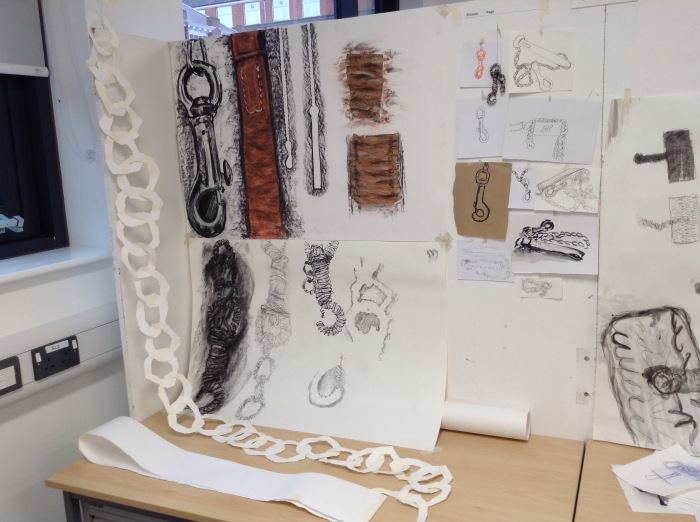For quite some time I experimented and played with materials to see what I could do with the essence of a chain, which in turn helped me to develop it further.
 I like the way the light shone through the paper and distorted the paper chain’s shadow.
I like the way the light shone through the paper and distorted the paper chain’s shadow. I like how the close up of the paper chain merges it all together.
I like how the close up of the paper chain merges it all together.
 When mixing the glue I liked playing with its form in the water.
When mixing the glue I liked playing with its form in the water. Some of the texture boards were based off the leather texture of the lead handle.
Some of the texture boards were based off the leather texture of the lead handle.













